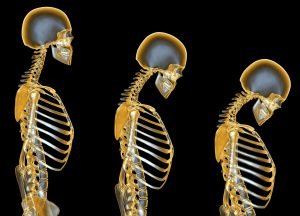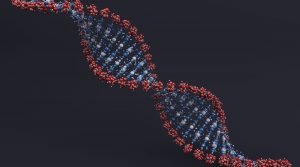Summary
The term “osteoporosis” originates from Greek, meaning “porous bone.” In this condition, bones develop tiny holes and become more fragile because they break down faster than they are rebuilt. Bones are living tissues that constantly undergo a process of breakdown and renewal, but with osteoporosis, this balance is disrupted, leaving the bones weakened.
Due to this structural weakening, bones affected by osteoporosis are brittle and prone to fractures, even from minor incidents, such as bending over, lifting something heavy, or even strong coughing. Common fracture sites include the wrists, spine, and hips. Since osteoporosis progresses gradually, it often goes unnoticed until a fracture occurs. Other signs may include back pain, a stooped posture, and loss of height over time.
Osteoporosis typically develops with age, as bones naturally lose density and strength over the years. Bone loss can begin as early as age 35. Besides aging, lifestyle factors also play a significant role in the risk of osteoporosis. Certain habits and behaviors, such as smoking, excessive alcohol consumption, and inadequate nutrition, can negatively impact bone health. To treat osteoporosis, doctors may prescribe medications that slow down bone loss and strengthen bone density.
Table of Contents
Symptoms of Osteoporosis

Osteoporosis progresses slowly, so symptoms often go unnoticed until later in life. As the condition advances, individuals may begin to experience the following symptoms:
- Back Pain. Persistent back pain is a common symptom as the bones in the spine become weak and compressed.
- Stooped Posture. Osteoporosis can lead to a gradual curvature of the spine, resulting in a hunched or stooped posture.
- Loss of Height. As the spine compresses due to weakened vertebrae, individuals may notice a reduction in their height over time.
- Frequent Fractures. Bones affected by osteoporosis are fragile, making fractures more likely to occur even with minor incidents.
While osteoporosis may have only a few visible symptoms, it can significantly impact daily life. Weak bones cause discomfort and limit mobility, making it difficult for individuals to perform routine activities. Moreover, individuals with osteoporosis are at high risk for fractures from simple actions like bending or even coughing, which can further complicate their health and quality of life.
Types of Osteoporosis
Osteoporosis is classified into four main types, each with distinct causes and affected populations:
- Primary Osteoporosis. This is the most common type of osteoporosis, predominantly affecting women more than men. It is largely age-related, as bone density naturally decreases with age. This type is more likely to develop in individuals who lack a healthy lifestyle, such as inadequate nutrition and insufficient physical activity, which further weaken the bones over time.
- Secondary Osteoporosis. Secondary osteoporosis results from another medical condition or prolonged use of certain medications. Conditions like leukemia, hyperthyroidism, and hyperparathyroidism can accelerate bone loss, leading to this type of osteoporosis. Additionally, long-term use of medications such as corticosteroids and treatments for breast cancer can also contribute to bone weakening.
- Osteogenesis Imperfecta. Osteogenesis imperfecta is a rare, congenital form of osteoporosis that primarily affects newborns. This condition, often called “brittle bone disease,” results in bones that are unusually fragile and prone to fractures. The exact cause is unknown, but it is believed to be genetic. Osteogenesis imperfecta can vary in severity, and symptoms often present at birth or in early childhood.
- Idiopathic Juvenile Osteoporosis. This very rare type of osteoporosis affects children, typically between the ages of 8 and 14. It often occurs in children who are underweight or have other growth issues, but the exact cause remains unclear. Idiopathic juvenile osteoporosis can lead to frequent fractures and may impact a child’s growth and mobility.
Understanding these types of osteoporosis helps in tailoring prevention and treatment strategies to meet the specific needs of affected individuals, ensuring a more comprehensive approach to managing bone health.
Diagnostic Procedures for Osteoporosis
Diagnosing osteoporosis involves various tests to assess bone density and detect early signs of bone loss. Here are the common diagnostic procedures used:
- Bone Density Test (DEXA Scan). The most widely used test for diagnosing osteoporosis is the DEXA (dual-energy X-ray absorptiometry) scan. It measures bone mineral density (BMD) in areas like the hip, spine, and wrist. This test provides a T-score, indicating whether bone density is normal, low, or in the range of osteoporosis.
- X-Rays. While X-rays are not effective for early diagnosis, they can reveal fractures and bone loss in later stages of osteoporosis. X-rays are often used to identify spinal fractures or other injuries caused by weak bones.
- Quantitative Computed Tomography (QCT). QCT provides a three-dimensional image of bone density, focusing on the spine. Although it’s more expensive and involves higher radiation than DEXA, it can be useful in specific cases, especially for monitoring bone changes over time.
- Ultrasound. Sometimes, an ultrasound test is used to measure bone density, particularly in the heel, which is less invasive and does not use radiation. However, it is less accurate than DEXA and is usually used as a preliminary screening tool.
- Blood and Urine Tests. These tests help rule out other conditions that may cause bone loss and identify factors contributing to osteoporosis. They measure levels of calcium, vitamin D, thyroid function, and hormone levels, providing insights into bone health.
- FRAX Score Assessment. The FRAX (Fracture Risk Assessment Tool) calculates the 10-year probability of a fracture based on factors like age, gender, weight, family history, and bone density. This tool helps doctors determine the need for treatment based on fracture risk.
These diagnostic procedures allow healthcare providers to assess the severity of osteoporosis, understand contributing factors, and develop an effective treatment plan to reduce fracture risk and improve bone health. Early diagnosis is crucial for managing osteoporosis and preventing complications.
Complications of Untreated Osteoporosis
If osteoporosis is left untreated, it can lead to serious complications that impact both physical health and quality of life. Here are some potential complications of untreated osteoporosis:
- Increased Risk of Fractures. Untreated osteoporosis makes bones extremely brittle, significantly increasing the risk of fractures, even from minor falls or sudden movements. Common fracture sites include the hip, spine, and wrists, and these fractures can be debilitating.
- Chronic Pain. Fractures due to osteoporosis often result in chronic pain, especially if the spine is affected. Vertebral fractures can cause persistent back pain, which may worsen over time and interfere with daily activities.
- Loss of Mobility and Independence. Frequent fractures and chronic pain can lead to reduced mobility, limiting one’s ability to perform routine tasks. This loss of mobility can result in dependence on others for basic needs, reducing independence and overall quality of life.
- Spinal Deformities. Osteoporosis often affects the spine, causing vertebrae to collapse, leading to a stooped posture or kyphosis (hunched back). These spinal deformities can affect balance and height, further increasing the risk of falls and fractures.
- Respiratory and Digestive Issues. Severe spinal deformities from multiple vertebral fractures can compress the lungs and stomach, leading to breathing difficulties and digestive problems. These issues can reduce appetite, leading to poor nutrition and further weakening the bones.
- Depression and Social Isolation. Chronic pain, reduced mobility, and dependence on others can lead to emotional challenges, including depression, anxiety, and social isolation. The fear of falls and injuries may also prevent individuals from engaging in social activities.
- Higher Mortality Risk. Fractures, especially hip fractures, are associated with a higher risk of complications and mortality, particularly in older adults. Recovery from such fractures can be challenging, and in severe cases, it can lead to life-threatening complications.
Early diagnosis and treatment of osteoporosis are crucial to prevent these complications. Treatment options, including medication, lifestyle changes, and physical therapy, can strengthen bones, reduce fracture risk, and improve the overall quality of life for those affected by osteoporosis.
Causes of Osteoporosis

Osteoporosis develops due to a combination of factors that weaken bones over time. Here are the primary causes:
- Aging. As we age, the process of bone renewal slows down. New bone formation cannot keep up with the breakdown of old bone, leading to a gradual decrease in bone density. This imbalance makes bones more porous and fragile, increasing the risk of fractures.
- Lack of Exercise. Bones reach their peak density and strength during the 20s and 30s, thanks to physical activity that stimulates bone formation. However, a sedentary lifestyle or lack of regular exercise prevents bones from fully developing their strength. Without enough weight-bearing and muscle-strengthening activities, bones become weaker over time.
- Poor Nutrition. A diet lacking in essential nutrients like calcium and vitamin D leads to weaker bones. Calcium is crucial for bone structure, while vitamin D helps the body absorb calcium. Without adequate nutrition, bones cannot develop or maintain the density needed to remain strong, raising the risk of osteoporosis.
- Excessive Smoking and Alcohol Consumption. Cigarettes and alcohol contain numerous toxic chemicals that weaken bones by reducing bone density and slowing down the formation of new bone. Smoking and excessive drinking also interfere with the body’s ability to repair damaged bone tissue, leaving bones brittle and prone to injury.
These factors contribute to the development of osteoporosis, making it crucial to adopt healthy lifestyle habits, such as a balanced diet, regular exercise, and avoiding smoking and excessive alcohol, to maintain bone health and reduce the risk of this condition.
Prevention of Osteoporosis

Osteoporosis can be prevented, but it’s essential to take precautions while young. This is because, after age 35, bone regeneration gradually slows down. Building dense and healthy bones early on helps protect against fractures and bone loss later in life. Here are steps to keep bones healthy and reduce the risk of osteoporosis:
- Eat Protein-Rich Foods. Protein supports the body’s ability to create new bone. Good sources of protein include meat, fish, eggs, nuts, dairy products like milk, and legumes.
- Consume Foods High in Calcium and Vitamin D. Besides protein, bones also need calcium and vitamin D to stay strong. Many calcium-rich foods also contain vitamin D, such as milk, cheese, eggs, yogurt, soy, tofu, cereals, orange juice, salmon, sardines, and leafy green vegetables.
- Maintain a Healthy Weight. Achieving an ideal weight is important for bone health. Being underweight can lead to fragile and thin bones, making them more prone to fractures. On the other hand, excess weight adds stress on the bones, increasing the risk of fractures. Aim for a balanced weight to support strong bones.
- Exercise Daily. Aim for at least 30 minutes of exercise each day to keep bones and muscles strong. Weight-bearing and muscle-strengthening exercises are particularly beneficial. If you are underweight or overweight, consult a professional for advice on the appropriate amount and type of exercise.
- Avoid Smoking and Excessive Alcohol Consumption. Both smoking and heavy drinking contain toxins that weaken bone health. Avoiding these habits contributes to healthier bones.
- Regular Medical Check-Ups. Regular consultations with a doctor help detect any bone health issues early on. If you experience any symptoms of bone weakness or discomfort, seek medical advice promptly to address potential problems.
Taking these preventive measures can help maintain strong bones and significantly reduce the risk of developing osteoporosis, supporting a healthier life as you age.
Risk Factors for Osteoporosis

Everyone experiences bone loss over time, as bones are living tissues that naturally break down and regenerate. However, the rate of bone deterioration varies among individuals and can be influenced by several factors:
- Age. Osteoporosis is more common in older adults, as bone regeneration slows with age. While rare, it can also affect infants and children with certain genetic conditions.
- Gender. Women are more prone to osteoporosis than men due to hormonal changes, particularly after menopause when estrogen levels drop, accelerating bone loss.
- Ethnicity. Caucasian and Asian populations have a higher risk of developing osteoporosis, possibly due to lifestyle factors and structural differences in bone density.
- Family History. Osteoporosis can run in families. If there is a history of osteoporosis among relatives, the likelihood of developing the condition increases.
- Body Structure. People with smaller body frames often have lower bone mass, which means they are more susceptible to faster bone density loss and increased fracture risk.
- Lifestyle Choices. Smoking and excessive alcohol consumption weaken bones by slowing down bone formation. Quitting these habits can significantly improve bone health.
- Other Health Conditions. Certain diseases, such as leukemia, thyroid disorders, and breast cancer, can increase the risk of osteoporosis. Additionally, some medications used to treat these conditions may negatively affect bone health.
Understanding these risk factors can help individuals take preventive measures, such as adopting a healthy lifestyle, monitoring bone health, and seeking medical advice for any conditions or medications that may impact bone density.
Osteoporosis FAQs
Here are some frequently asked questions about osteoporosis:
- What is osteoporosis?
Osteoporosis is a condition where bones become weak and brittle due to a loss of bone density. This makes them more susceptible to fractures, even from minor stresses or falls. - What causes osteoporosis?
Osteoporosis is often caused by aging, hormonal changes (especially in women after menopause), poor nutrition, lack of physical activity, smoking, and excessive alcohol consumption. Some medical conditions and medications can also lead to secondary osteoporosis. - What are the symptoms of osteoporosis?
Osteoporosis often has no symptoms in its early stages. As it progresses, symptoms may include back pain, a stooped posture, loss of height, and frequent fractures, particularly in the wrists, hips, and spine. - Who is most at risk for osteoporosis?
Individuals at higher risk include older adults, women (especially post-menopausal), people with a family history of osteoporosis, those with small body frames, and individuals with poor lifestyle habits like smoking or excessive drinking. - How is osteoporosis diagnosed?
Osteoporosis is typically diagnosed through a bone density test called DEXA (dual-energy X-ray absorptiometry). This test measures bone density in areas prone to fractures, such as the hip and spine. - Can osteoporosis be cured?
Osteoporosis cannot be cured, but it can be managed. Treatments include medications that slow bone loss and increase bone strength, along with lifestyle changes like improved diet and exercise. - How can I prevent osteoporosis?
Prevention includes a healthy diet rich in calcium and vitamin D, regular exercise (especially weight-bearing and resistance exercises), avoiding smoking, and limiting alcohol intake. Building strong bones during youth also helps reduce the risk later in life. - Are men at risk of osteoporosis?
Yes, while osteoporosis is more common in women, men are also at risk, especially as they age. Men who smoke, drink excessively, or have low testosterone levels are at higher risk. - Is osteoporosis painful?
Osteoporosis itself is not painful, but the fractures that result from weakened bones can cause significant pain. Common fracture sites include the spine, which can lead to chronic back pain and loss of mobility. - What should I do if I think I have osteoporosis?
If you suspect you have osteoporosis, consult a doctor for an evaluation. Early diagnosis through bone density testing can help you begin treatment to strengthen your bones and reduce the risk of fractures.


